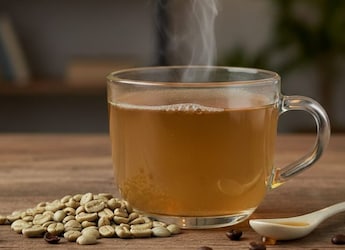Bird flu or Avian Influenza is highly contagious viral disease caused by Influenza Type A viruses which generally affects poultry birds such as chickens and turkeys. Many states have confirmed bird flu, and many people are shying away from eating chicken or eggs.
Bird flu is transmitted to humans through contact with infected bird feces, nasal secretions, or secretions from the mouth or eyes. Consuming properly cooked poultry or eggs doesn't transmit the bird flu, but eggs should never be served runny. But if you are still wary, there are many vegetarian sources of protein you can toy with.
Though all the nonveg options have all 9 essential amino acids present, but one can also get the required amount of proteins from veg sources. You would have to do some mix and match to complete your daily quota. Here are some ideas:
(Also Read: Bird Flu: FSSAI Issues 10-Point Guide To Eat Egg And Chicken The Right Way)
1. Load Up On Nuts and Oil seeds-
These are rich in vitamins E, B6, niacin and folate; and they provide minerals such as magnesium, zinc, plant iron, calcium, copper, selenium, phosphorus and potassium, dietary fiber.
They are also high in monounsaturated fats and polyunsaturated fats, low in saturated fat. They are also good sources of dietary protein, hence a good alternative to animal proteins. Some nuts are also high in amino acid arginine, which keeps blood vessels functioning smooth.
Start your day with a handful of nuts for optimal nutrient intake.
2. Do Not Miss Out On The Legumes and Pulses -
These are rich in protein, folate, fiber (both insoluble and soluble), iron, phosphorus, polyunsaturated and monounsaturated fatty acids including linoleic and oleic acids
Legumes contain several components that, when eaten as part of a balanced plant-rich diet, may help prevent the development of various chronic conditions like CVD, obesity and poor digestive health. If you are having dal, it is a good idea to combine it with rice or brown rice for your amino acid intake.
If you are having dal, it is a good idea to combine it with rice or brown rice.
3. Soya is a good idea too
Its high protein content, vitamins, minerals and insoluble fibre make soya a credible superfood. Soya bean has been transformed into a number of popular soya-based foods including:
Miso - a fermented soya bean paste that is used as a flavouring, it is popular in Asian cuisine. It is a good source of many minerals and vitamins.
Tempeh - is an Indonesian specialty typically made by cooking and dehulling soya beans and forming a textured, solid 'cake'. It is a very good source of protein, B vitamins and minerals.
Tofu - also known as bean curd is made from soya milk by coagulating the soya proteins with calcium or magnesium salts. The whey is discarded, and the curds are processed. It is an excellent source of iron and calcium and a good source of protein. If you are switching to veganism, tofu could work as a substitute for paneer.
(Also Read: Bird Flu: Is It Safe To Eat Chicken And Poultry? Here's What WHO Recommends)
4. Time To Try Quinoa
Quinoa seeds are gluten-free and contain all the nine essential amino acids. Yes, you heard us. 1 cup of cooked Quinoa seeds contains about 8 grams of protein, and the pseudo-cereal is also super versatile. You can use it to make quinoa pulao, quinoa biryani, upma et al.
Quinoa is a good source of vegetarian protein.
5. The Humble Cottage Cheese, And Its Many Avatars
Cottage Cheese is high in protein and super low in calories. Cottage cheese is packed with essential nutrients. It is an intrinsic part of Indian vegetarian fare. Paneer bhurji, paneer paratha, paneer koftam paneer biryani, there are options galore to experiment with.
6) Including Hemp Seeds For Snacking and In Salads
It is rich in all 9 amino acids. Hemp seeds are especially rich in an amino acid called arginine, which has benefits for heart health. It is a great source of essential fatty acids, such as alpha-linolenic acid (ALA), which is an omega-3. It is also, rich in fibre, magnesium and many other micro-nutrients.
About Author: Ms Jyoti Bhatt is a senior dietician from Jaslok Hospital & Research Centre
Disclaimer:
The opinions expressed within this article are the personal opinions of the author. NDTV is not responsible for the accuracy, completeness, suitability, or validity of any information on this article. All information is provided on an as-is basis. The information, facts or opinions appearing in the article do not reflect the views of NDTV and NDTV does not assume any responsibility or liability for the same.
